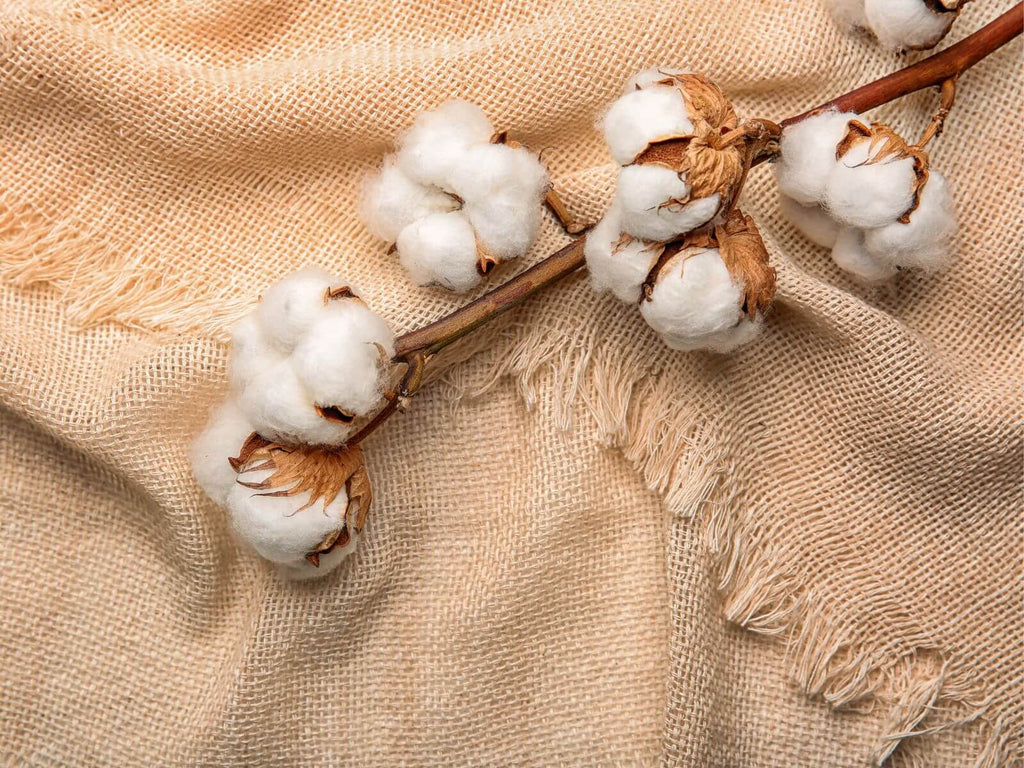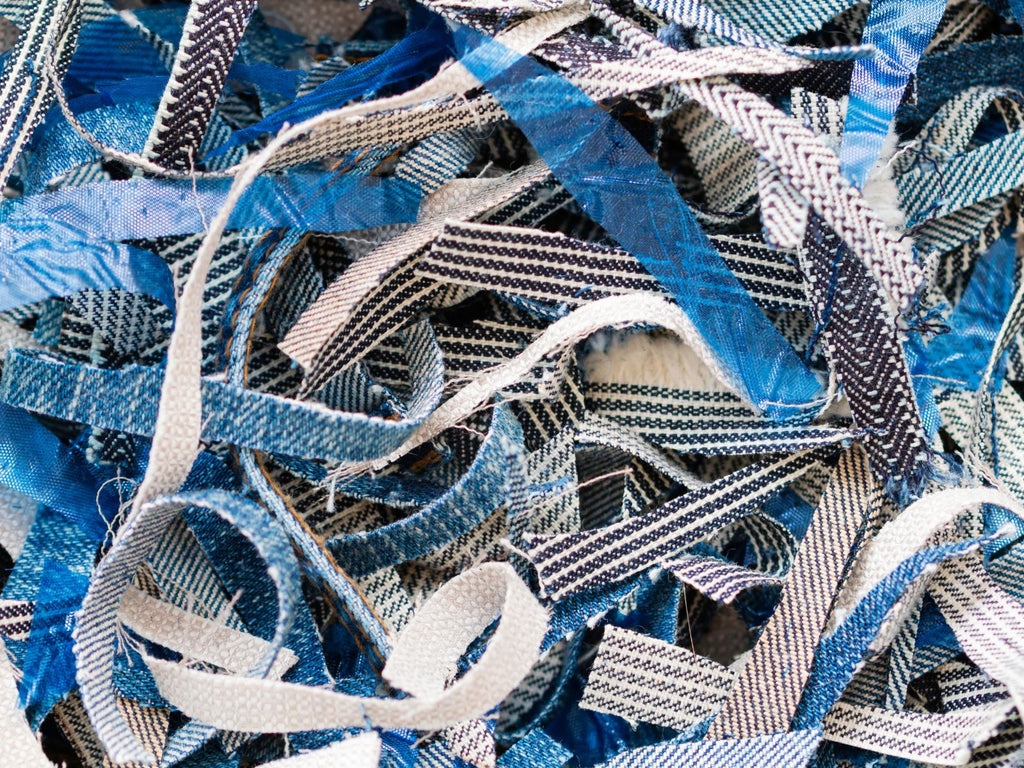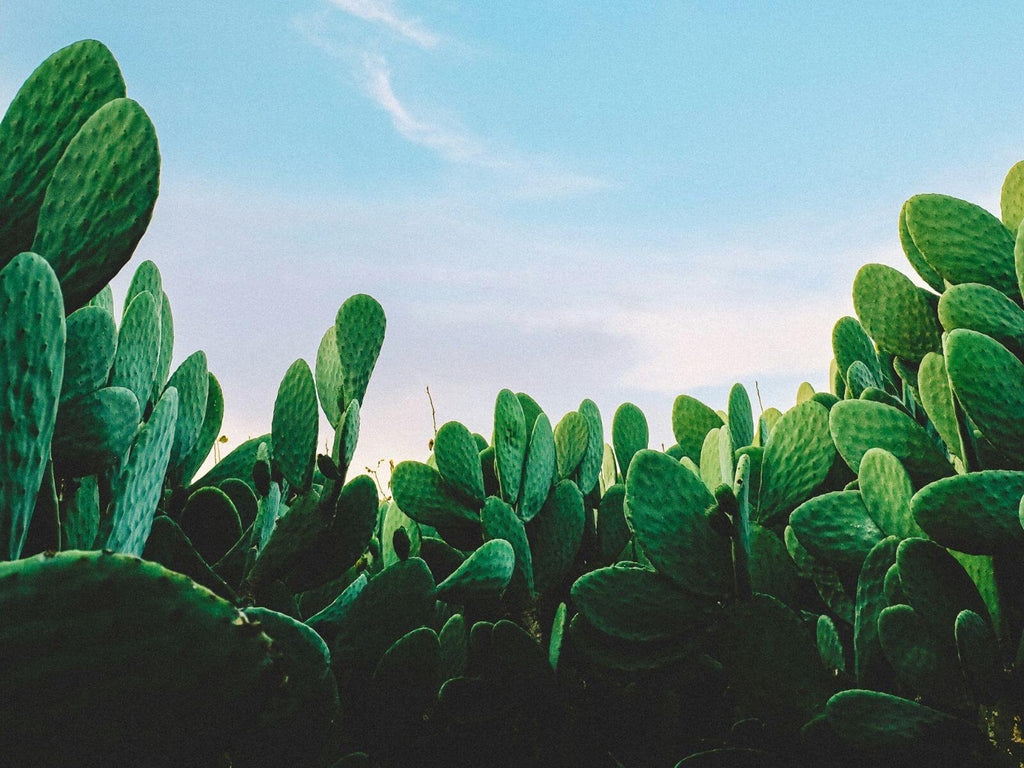The global awareness of how our actions and purchases impact the state of our natural world has grown significantly in the past few years.
Industries like fashion and textiles have a massive responsibility to produce quality garments that are kind to the environment. But consumers must also take on the responsibility of supporting the brands that are focused on preserving the earth.
Come with us on this journey as we tell you all about eco-friendly fabrics. What are they? Why are they important? And what are the sustainable fabrics we advocate for the most?
What Are Eco-Friendly Fabrics?
The textile industry is infamously one of the largest polluters globally. This is primarily linked to the harmful production methods of fabrics and textiles.
The production of traditional well-known fabrics, both synthetic fabrics and natural fabrics (animal-based and plant-based), has polluted and degraded our natural resources since fast fashion came to the fore in the latter part of the 20th century.
Traditional fabric production processes consume an enormous amount of water and require extensive areas of land. For example, the water used to produce cotton in India could provide 85% of its citizens with 100 liters of water per year. Meanwhile, there are more than 100 million people in the country who don’t have access to safe water.
These antiquated methods also pollute waterways with microplastics, cause a horrifying amount of greenhouse gas emissions, degrade both forests and soil, and fill up landfills.
Environmentally friendly fabrics (or eco-friendly fabrics) are those that have less of an impact on the environment than their traditional alternatives, while still maintaining the essence and quality of the fabrics we have become familiar with.

What Makes Them Sustainable?
Eco-friendly alternatives to traditional fabrics have a few underlying factors that can make them sustainable such as:
- An organic or chemical-free fabric doesn’t release harsh chemicals and pesticides during its production so it does not pollute the soil and water around it.
- Fabrics manufactured using recycled materials make sure waste fabric isn’t being dumped unnecessarily into landfills.
- Many of these fabrics are being created using a circular manufacturing process. This entails recycling used production materials and bringing them back into circulation at any stage of the process. A production process such as this extends the life of materials to minimize waste and the use of energy and resources.
- Eco-friendly fabrics focus on biodegradability and sustainable end-of-life disposal prospects, such as reuse, resale, donating, recycling, trading, etc.
The Rise of Eco-friendly & Sustainable Fabrics in the Fashion Industry
Over the more recent years, sustainable fabrics are becoming easier and easier to find in stores, at markets, and online. Buyers are increasing the demand for clothes made of sustainable fabric.
As a result, clothing brands need to align with the global standard to stay in the game. Fashion brands are now constantly on the search for eco-friendly materials that satisfy the conscious consumer.
Organic and recycled cotton, linen, wool, polyester, etc., are becoming increasingly popular. And the demand for sustainable fabrics is continuing to rise past 2023.
2020 saw a lot of change in the textile industry. After the pandemic, a survey showed that 67% of consumers consider the use of sustainable fabrics and materials to be an important factor when purchasing clothing.
Moreover, 60% of surveyed consumers stated that they have started putting more effort into recycling and purchasing from brands that offer environmentally friendly packaging.
This consumer awareness and action have played a huge role in determining the trajectory of fabric production in fashion toward sustainability.

The Importance of Moving Toward Eco-friendly Fabrics
You may not feel you have much power to change what’s happening to our environment, but this isn’t true.
Consumers can support brands that use sustainable fabric to manufacture their clothes, encouraging the further development of a more eco-friendly fashion industry. It’s simply a case of supply and demand.
The production cycle of unsustainable versions of leather, cotton, viscose fabric, etc., is devastating to the environment. Petroleum drilling and deforestation are having massive negative impacts on biodiversity, human health, and the health of other species.
The toxic chemicals involved in the plasticizing, bleaching, softening, and dyeing of fabrics are also detrimental to the planet’s natural resources. This excessive pollution is gradually making the water undrinkable and the soil unable to be used for cultivation.
Moreover, millions of tons of textile waste materials are dumped in landfills each year. All of these factors hurt the planet and contribute to climate change.
Therefore, both consumers and brands have the responsibility of taking action against fast fashion.
5 Types of Eco-Friendly Fabrics to Look Out for
Here are some of the main types of environmentally-friendly fabrics you can look out for when making purchasing decisions:
1. Natural Fibers
Natural fibers are raw materials derived directly from nature and converted into fabrics. The three main categories are plant-based, animal-based, and mineral-based.
Natural fibers are generally eco-friendly. However, not all natural fibers conform to this rule. Some traditional methods of growing utilize toxic chemicals and pesticides.
Organic natural fibers present a more positive impact on the environment than their traditional counterparts.

Organic Cotton
Organic cotton has a lower impact on environmental and human health than traditional cotton in the areas of chemical toxicity, water quality, biodiversity protection, and skin health. However, organic cotton does require more land and water than traditional cotton.
Organically grown cotton removes toxic chemicals and pesticides from the method of production. Not all fashion brands are fully certified on this front though, meaning a lot of the “organic” cotton we think we’re buying is not organic at all.
Look for brands that indicate their GOTS (Global Organic Textile Standard), GRS (Global Recycled Standard), or GOLS (Global Organic Latex Standards) certification levels. These certifications will give you an idea of whether your chosen brand is greenwashing or if they’re actually practicing green solutions.
Organic Hemp
Organic hemp is at the very top of the list of the most sustainable natural fibers. Extracted from the plant’s stalk, organic hemp fabric requires very little water to cultivate, and it naturally fertilizes the soil in which it grows.
In addition to its traits of preserving natural resources and promoting soil health, organic hemp is biodegradable. It also doesn’t require pesticides and synthetic fertilizers to grow beautifully.
When it comes to its use in clothing, hemp is one of the most durable natural fabrics in the world. It’s lightweight, versatile, soft, strong, breathable, sun-protective, and antimicrobial. In summer, you’ll feel cool. In winter, you’ll be warm wearing hemp garments.
Organic Flax Linen
Organic linen is another one of the most sustainable fabrics you can get as it is made with fibers from the flax plant. Flax linen is strong, durable, thick, and breathable.
People who live in hot regions should definitely consider making organic linen a sustainable wardrobe staple. It is a strong fabric that will last a long time, dries very quickly, and is one of the most eco-friendly fashion textiles on the market.
This long-lasting natural fiber absorbs CO2, doesn’t require fertilizers to grow, and is biodegradable.
Organic linen cultivation also has the potential to rehabilitate polluted soil!
Organic Bamboo
Another item to add to your sustainable wardrobe is organic bamboo clothing, extracted from the wood pulp of the bamboo plant. Bamboo is an excellent eco-friendly material as the plant absorbs high quantities of CO2, taking it out of the atmosphere, and releases more oxygen than trees.
Traditional bamboo linen is processed with strong, harmful chemicals that are incredibly unhealthy for both the environment and the manufacturing workers.
But then there is organic bamboo, which doesn’t require the use of any harmful pesticides and fertilizers to grow. And consumers end up with comfortable and long-lasting clothing.
Unfortunately, only a small percentage of the bamboo linen on the market is 100% organic.

2. Recycled Natural Fibers
Regenerative fabrics function in a closed-loop system. Post-industrial and post-consumer waste is used to create new clothing items, avoiding any discarding into landfills. One example of this is the recycling of natural fibers.
Recycled Wool
As you may well know, the conventional form of wool production is anything but sustainable. It’s a rather resource-intensive material to produce.
There are also many ethical concerns associated with the treatment of sheep, alpacas, llamas, and goats.
So, since there is already so much of this fiber floating around in circulation, manufacturers have developed recycled wool.
Discarded garments and offcuts in the wool manufacturing process are upcycled to create new clothing items. This significantly reduces the negative environmental impacts and ethical concerns of traditional wool.
Thankfully, we’re seeing less of a demand for virgin wool. Consumers are leaning toward the recyclable/recycled option instead.
Recycled Cotton
The most eco-friendly version of cotton is recycled cotton fabric. Recycled cotton is a responsible cotton alternative.
Used cotton garments, old upholstery, and other textile leftovers are recycled or upcycled.
Consumers can still have the soft, durable fabric they love without worrying about the excessive energy and water consumption it took to make the garment.

3. Recycled Synthetics
Synthetic textiles are challenging to recycle, due to the use of toxic chemicals during production, microfiber emissions, and a general lack of education among the public. Despite this, many textile companies are aspiring to recycle elastane, spandex, nylon, polyester, etc., to the best of their abilities.
Recycled Nylon
Virgin nylon uses petroleum and enormous amounts of water and energy to produce. The immense amount of nitrous oxide emitted has 300x the warming potential of CO2.
Recycled nylon is derived from synthetic waste such as deadstock fabric, industrial fabric, waste fabric, fishing nets, etc.
The process uses far less water and produces far less waste than that of conventional nylon yarn. Yet, it’s of the same quality as virgin nylon yarn.
The waste is collected, cleaned, shredded, and depolymerized. Caprolactam, a raw material, is extracted and then repolymerized to transform into recycled nylon, such as ECONYL.
One drawback of recycled nylon is its microfiber emissions. This is the primary reason a recycled textile such as ECONYL is mostly used in the production of practical garments that don’t require much machine-washing (shoes, outerwear, swimwear, etc.).
Recycled Polyester
Traditional polyester is one of the least sustainable fabrics. It is energy-hungry, non-biodegradable, and produces microfibers galore. The production process uses highly toxic chemical dyes and produces more CO² emissions than almost any other fabric.
Recycled polyester is a fantastic eco-friendly fabric alternative to virgin polyester. The manufacturing process involves using PET (polyethylene terephthalate) found in pure plastic bottles. PET is then recycled to create the eco-friendly fabric, recycled polyester.
Recycled polyester requires half the amount of energy and has far less contamination impacts on air, water, and soil. This sustainable fabric is exceptionally versatile. Many companies are currently using it to create t-shirts, leggings, yoga mats, and more.
4. Regenerated Cellulose Fibers
Regenerated cellulosic materials are also manufactured in a closed-loop system. The chemical solvents used to produce these textiles are reclaimed, filtered, and reused numerous times to reduce the amount of dangerous waste.
The production process involves extracting cellulose from wood pulp in bamboo, beech, birch, eucalyptus, softwood, maple, and aspen trees. The cellulose or pulp is dissolved and extruded using chemicals. The continuous filament produced is then cut into staple fibers.
The main materials produced are viscose, lyocell, modal, and acetate, which all involve relatively similar manufacturing processes:
- Harvesting
- Chemical application to separate the cellulose into individual fibers
- Further chemical application to create a solution
- Spinning and cleaning
Many brands are mindful of using controlled wood sources to harvest their raw materials. As such, manufacturers producing this type of fabric can avoid contributing to deforestation. Regenerated cellulose fibers are also biodegradable, minimizing their impact on the environment.
However, the process of producing regenerated cellulose fibers can be very water- and chemical-intensive depending on the methods used.
5. Vegan Alternatives
Traditional animal-based fabrics are harmful to the environment and involve the exploitation of animals. Vegan alternatives to silk and leather, for example, are cruelty-free, sustainable, and don’t require herbicides and pesticides.
Here are some examples:
Qmonos
Conventional silk has an unethical production method that brutally exploits silkworms.
Qmonos is a sustainable fabric of synthetic spider silk. It’s the ideal cruelty-free alternative for those who still want smooth silk to feature in their wardrobe.
This fiber, made from a fusion of microbes and spider silk genes, comes straight from a fantasy novel. It’s stronger than steel and more flexible than nylon! Not to mention, it’s gentler on the environment.
No spiders were farmed or harmed in the making of this fabric!

Cactus Leather
Cactus leather is made from the leaves of the Nopal cactus plant (or the prickly pear).
A single cactus plant can last up to 8 years, on account of the sustainable harvesting method. The mature cactus leaves or pads are cut off only twice a year, allowing the cactus to regenerate.
Cactus leather growth relies solely on natural earth minerals and rainwater. And plantations absorb much more CO2 per year than they generate.
Cactus leather belts, wallets, shoes, and handbags are durable, breathable, and waterproof. And they have great resistance to abrasion, rubbing, and tearing.
Final Thoughts
These fabrics are some of the most eco-friendly fashion textiles you can get. But there are many more that are in circulation or are being invented as we speak.
Now you know that traditional silk, cotton, nylon, wool, and polyester all have their monumental downsides. So opt for the certified organic and recycled alternatives of these popular fabrics.
You have more power than you think to change the direction of the fashion industry. Let’s all do our part to lessen our carbon footprints and help the planet!

























